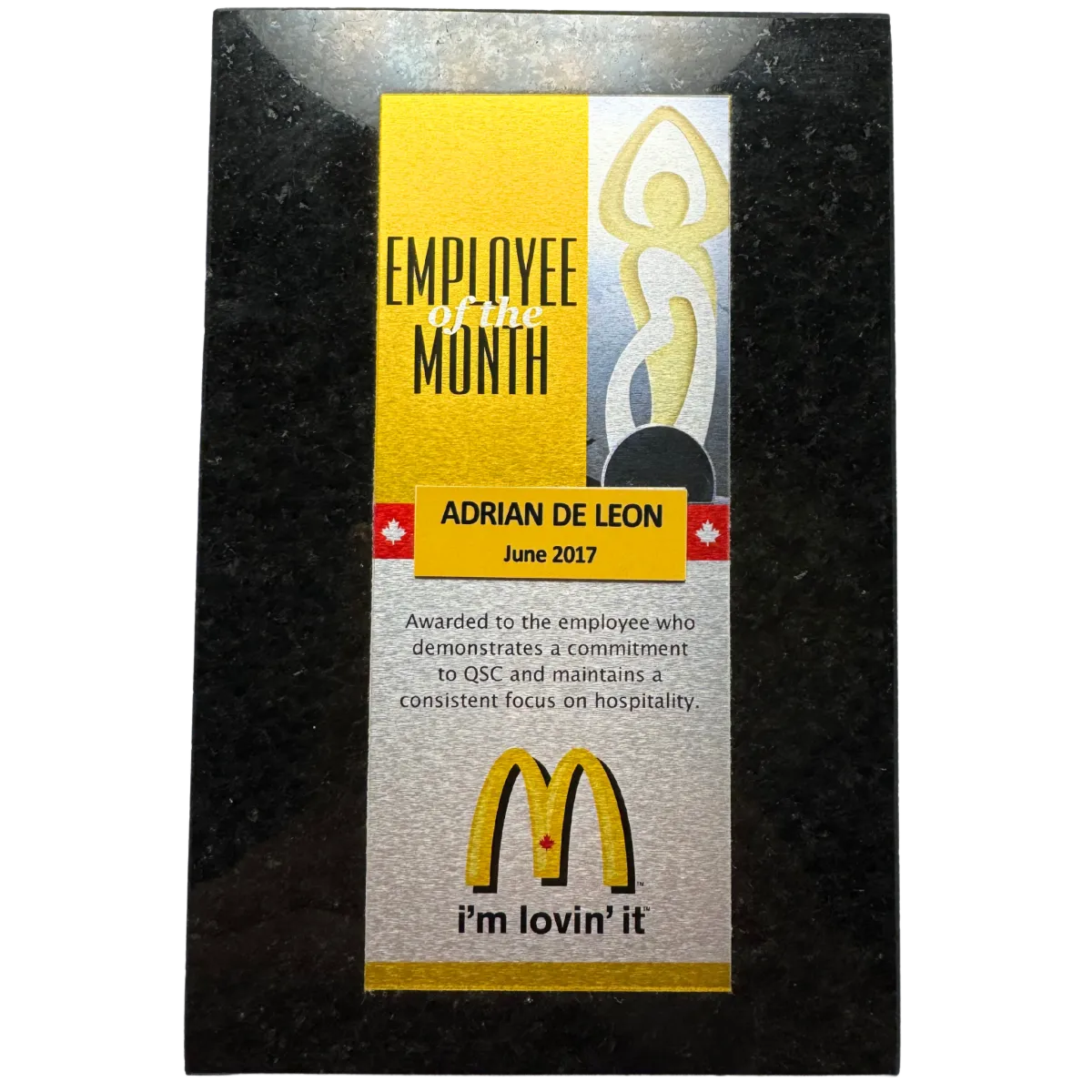Artifacts

I wanted to include my PADI Open Water Scuba diving certificate into my portfolio, since it reflects my passion beyond the professional realm. This certification holds significant value for me, representing dedicated hours in training and allowing me to discover the beautiful world under the sea.

This right here is my Employee of the Month award that I got during my time working at McDonald's restaurants. I wanted it in my portfolio because this plaque has a lot of meaning to me, it's the first award I got in my professional journey. It's a symbol of the hard work, and dedication I bring to the table.

This is my certificate of incorporation. It stands out as one of my proudest and most challenging achievements. When I embarked on the entrepreneurial journey, there was a lot of uncertainty, accompanied by self doubts. But despite the concerns, I persevered, and I was able to find profound meaning in the path I chose.
Education

BIO 414
Examines how genetic information is encoded, ordered, and expressed in whole organisms. Methods for obtaining, assembling, and annotating genomic sequences are explored. Gain hands-on computer experience using various bioinformatics tools to handle and interpret genomic sequence data
Interpreting and analyzing data.
Assemble a research project (GEP), with the use of different software tools
Developing and delivering effective and professional presentations

BIO 310
Using an interdisciplinary approach drawing from ecology, evolution, genetics, ethics, society, politics, and law, this course examines both theoretical and practical aspects of conservation biology. Investigate the causes and extent of human impacts on the natural world and explore practical solutions to maintain biodiversity.
Critically asses the impacts of human activities on ecosystems.
Design a survey method to determine species at risk
Use research and knowledge to create a management plan to increase biodiversity

CMNS 125
This course introduces the theory and practice of professional communications for academic and workplace audiences. Emphasis is on the communication process, and on direct, indirect, and persuasive messages and presentations. Research, citation/documentation styles, document design and electronic messaging are also studied and practiced.
Creating messages for specific purposes, audience, and media.
Applying the writing process, including planning, drafting, revising, editing, and proofing
Developing and delivering effective and professional presentations

ENGL 105
Learned the theory and practice of academic writing by designing and carrying out a structured research project.
Used reflective writing to develop transferable knowledge of writing
processes and situations.
Developed a productive, individualized writing process that includes brainstorming, choosing tools and research methods, and attention to rhetorical detail.
Repurpose content for different modes and media with consideration of audience, purpose, and power relations

STAT 106
An introduction to descriptive statistics, sampling, probability, estimation, hypothesis testing, correlation, regression, and analysis of variances, including multiple linear regression and
one-way ANOVA
Constructing frequency tables and use numerical and graphical methods to explore qualitative + quantitative data
Display and interpret linear regression models
Use statistical software to produce graphs and perform statistical analysis

